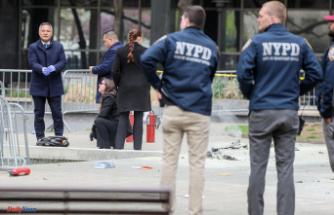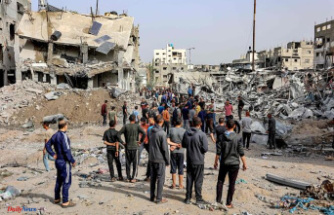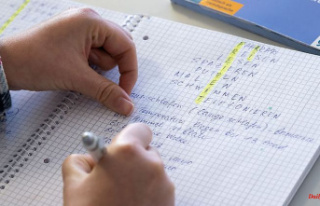A burial with an urn is the most common form of burial in Germany as well as in Saxony-Anhalt. The industry is changing - and worried.
Schönebeck/Düsseldorf (dpa/sa) - Increased costs are burdening the undertaker industry in Saxony-Anhalt. "We've been struggling massively with a lot of problems this year," said Wolfgang Ruland, head of the guild for the state association of undertakers. This ranges from the increased costs for the manufacturers of coffins and urns to the high energy, fuel and personnel costs. "The prices for energy such as gas and electricity alone have risen three to five times compared to last year," he said. This also applies to the crematoria, which require a great deal of energy. In order to reduce costs, attempts are being made, as in Schönebeck (Salzland district), to generate electricity for the systems with the help of solar systems.
In a crematorium, the body of a dead person is burned to ashes at very high temperatures, which are then buried in an urn, usually in a cemetery. According to the information provided by the federal association, there are around 160 crematoria in Germany, of which around two thirds are run by local authorities and one third by the private sector. According to its own statements, the Federal Association of German Undertakers represents the interests of around 3,200 companies in Germany. According to Ruland, these are mostly family businesses in Saxony-Anhalt.
In Germany, cremation is chosen for around three quarters of all those who have died. "The trend is clearly towards cremation," said Ruland. Reason are the higher costs for a burial site with a coffin, as well as the changed lifestyle. Planting and caring for graves is time-consuming and expensive for the bereaved.
In Saxony-Anhalt, the proportion of cremations - by urn - is already 94 percent, according to Ruland, which is above the national average. "Of course, the energy issue is also a concern for the undertaker industry. Because they too need energy stability to ensure a service at the end of every life cycle," said Stephan Neuser, Secretary General of the Federal Association of Undertakers (Düsseldorf). According to him, there were around one million deaths in Germany in 2021 alone, 72 percent of them cremations. The industry is thus an important part of the critical infrastructure, said Neuser.
"Undertakers and crematoria are working intensively on the energy efficiency of their trades, both locally and in general in the associations," he said. Electric vehicles or hybrids are also used. The dead find their last resting place in Germany in a cemetery in a grave or in an urn on the so-called green meadow, by burial at sea or on a tree.
In Eisleben (Manfels-Südharz district), as of this year, the Evangelical Church of St. Nicolai is the first columbarium in a church in Saxony-Anhalt, as Pastor Iris Hellmich explained. With this form of burial, urns are not buried in the ground, but in a special facility like a kind of "shelf". In the church in Eisleben, the columbarium was designed with the help of designers from the Halle Burg Giebichenstein Art Academy.
According to Hellmich, the demand is high. Since the opening, ten urns have been buried and around 40 places have already been reserved. A total of 1248 urns would have space in the columbarium in the future - for 15 years. After that, the ashes from the urns are not scattered anywhere, the pastor emphasized, but kept in the church in a so-called ash well - for eternity.












